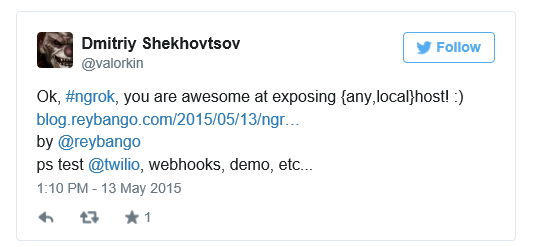Measuring Success in Developer Relations

Developer relations is an integral part of many software companies that hope to win the hearts and minds of developers. You may refer to it as developer evangelism or community outreach but ultimately, it’s a motion dedicated to ensuring that you’re proactively listening to what the community needs and looking to see how you can help, providing a conduit for developers to offer you feedback and have an opportunity to share your vision with the community and hopefully solve some of their problems.
In my opinion, this is absolutely the right order to be driving on since it’s important to always think of the needs of the community.
But the problem with developer relations is that it’s a subjective, somewhat nebulous field that in most cases doesn’t involve tangible “things“. This can make it hard to measure how successful you or your team are and if you’re hitting the mark with your community.
What do Developer Advocates do?
From my experience and through many discussions with my peers, the typical developer advocate tends to focus on several key outreach mechanisms to engage with developers. These are:
- Social media engagement, primarily Twitter
- Content generation via blogs or 3rd party sites such as Smashing Magazine
- Screencasts
- Podcasts
- Webinars
- Influencer engagement
- Local or regional meetups and usergroups
- Major conferences including speaking or attending
- Hackathons
The need to scale a message means that tactics one through five will get the most attention allowing advocates to reach the largest possible audience. They’re less personal but do afford a big megaphone. Tactics six through nine offer opportunities for more direct one-on-one interaction and engagement with the chance to meet with community members in person, work with influential developers to ensure they have an opportunity to affect your product direction and generally put a face to a name.
Easy Measurements
Of the tactics listed above, the easiest to measure success on are the top five. In most cases, analytics can offer insight into your motions, allowing you to determine how many people were interested in what you had to say. Tools like Twitter Analytics, Google Analytics and Bitly offer tremendous insight into how well your outreach and engagement efforts are doing. The data offered can have a profound impact on how you adjust your tone and message, especially in these semi-autonomous mediums where anything can be misconstrued and left to interpretation.
For example, my post about ngrok really went over well and, based on the analytics, I can say that it was something that really resonated with my audience:

I’m less concerned about the engagement rate & percentage as I am about the number of impressions—in this case 5,744 impressions. That’s a fairly decent reach and shows that a number of developers were interested in this.
Not So Easy Measurements
When we get to the lower end of the list, beginning at number six, it’s hard to quantify how well you’re doing; mainly because these are subjective motions that tend to have qualitative value and thus need to be measured as such. What I mean by this is that it’s very difficult to measure quantitatively the impact, immediate and long-term, that your participation in one of these motions might have.
Sure, you can say that you spoke at an event and it was attended by 300 people. But does that really tell you whether your message landed or that you affected product sales? Not really, and this is where the issues comes in with many companies that consider developer relations solely as a cost center and not a value-add. The pointy-haired guy wants hard numbers for something that’s more of a soft skill.
In my opinion, measuring this needs to be done through social media tracking of a specific key message you’re trying to land. This means that if you’re participating in an event, you should have an idea of what your goals are so that they can be measured afterwards by analyzing feedback on social mediums, especially Twitter.
Twitter is by far the best medium for gathering qualitative measurement of your engagements. The community uses it extensively to discuss the good and bad of what they see so if your message lands well, Twitter will know about it in most cases. Tools like Sprinklr help to offer insight into this and can help you gather information that you can use to measure your success. I personally use TweetDeck’s multi-column capability to track keywords that are important to me, especially at events or during announcements.
As I mentioned, these motions are typically measured qualitatively which means you need to ensure you save tweets or articles that highlight your motions, whether they’re positive or negative. Yes even negative feedback is valuable and should be used to determine how well you’re engaging with the community and if your company or product is of interest. This tweet regarding my ngrok post is a great example of this:

It’s equally important to ensure that the influencers you work have clarity into your vision and direction. Most developer advocates have lists of influential developers with whom they have regular conversations and briefings with so they can get a pulse of what’s trending and whether their company’s product is actually solving a need. Tracking how influencers feel is incredibly important because it tells you if they’re understanding your vision and what their sentiment is towards your product and company. Because these influencers have a big megaphone and the ears of the community, being able to proactively engage them at the right time ensures they’re getting the most accurate information to share with their followers.
And trust me, they will be vocal for both the good and bad. They’re in a position of trust and thought leadership and rightfully need to express their true feelings about a topic. Measuring your interactions with them, again, is typically qualitatively and from perspective a long tail scenario since most influencers will take their time to ensure the information is worthwhile to discuss or promote. This is why it’s very hard to measure. The best tool I’ve found for this is Onalytica which helps to offer engagement opportunities with influencers.
How Do You Measure Success?
I’d actually really love to hear from other developer advocates on this topic. I know there are plenty of other ideas out there on how to effectively measure engagements and it’d be great to be able to pool it altogether. I’m hoping you’ll jump in on the comments and offer up your experience and perspective so that we can all benefit and do our jobs better.
More Hands-on with JavaScript
It might surprise you a bit, but Microsoft has a bunch of free learning on many open source JavaScript topics and we’re on a mission to create a lot more with Microsoft Edge. Check out my own:
Or my team and colleagues:
- Microsoft Edge Web Summit 2015 (a complete series of what to expect with the new browser, new web platform features, and guest speakers from the community)
- Build of //BUILD/ and Windows 10 (including the new JavaScript engine for sites and apps)
- Advancing JavaScript without Breaking the Web (Christian Heilmann’s recent keynote)
- Practical Performance Tips to Make your HTML/JavaScript Faster (a 7-part series from responsive design to casual games to performance optimization)
- The Modern Web Platform JumpStart (the fundamentals of HTML, CSS, and JS)
- Developing Universal Windows App with HTML and JavaScript JumpStart (use the JS you’ve already created to build an app)
And some free tools: Visual Studio Code, Azure Trial, and cross-browser testing tools – all available for Mac, Linux, or Windows.
This article is part of the web dev tech series from Microsoft. We’re excited to share Microsoft Edge and the new EdgeHTML rendering engine with you. Get free virtual machines or test remotely on your Mac, iOS, Android, or Windows device @ http://dev.modern.ie/
(dpe)
Featured photo credit: Tim van der Kuip / Unsplash
